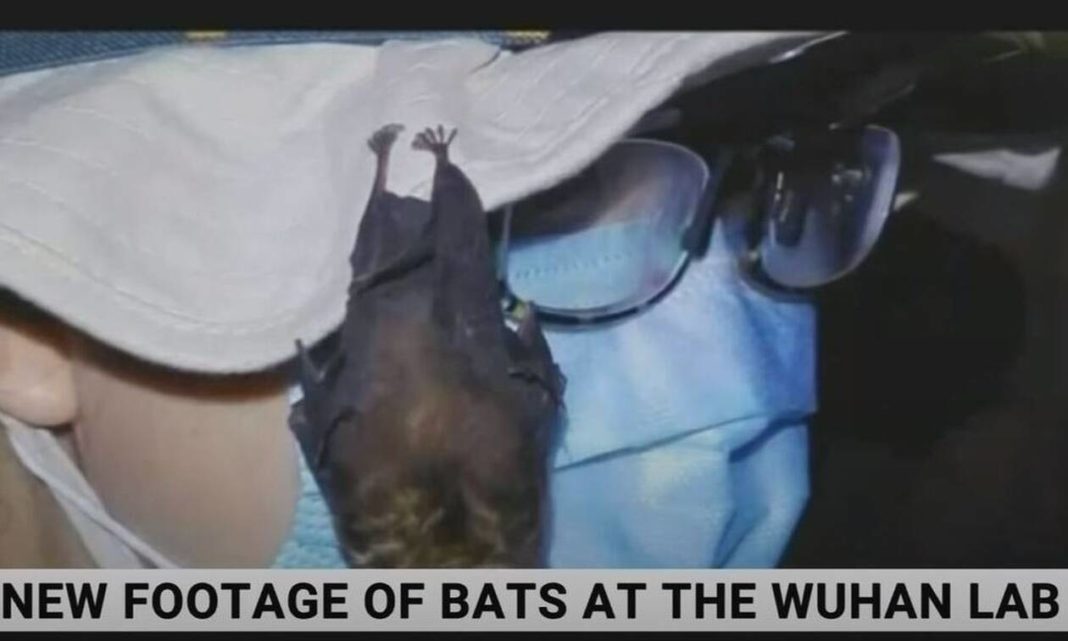The Australian Sky News made a bombshell revelation, bringing to light images from the Wuhan Institute of Virology where live bats are seen being kept
These images contradict the claims of the World Health Organization researchers , who had assured against the research they conducted on the origin of the coronavirus in the country, that there were never live bats in the laboratories , even referring to conspiracy scenarios.
The laboratory in the city of Wuhan, from where the coronavirus pandemic broke out, is at the center of theories regarding the “leakage” of the virus that changed the entire planet. Footage published by Sky News Australia shows live bats in cages inside the laboratory.
The footage shown by Sky comes from a Chinese state-owned advertising video released in 2017 to coincide with the inauguration of the Wuhan Institute of Virology. The video was discovered by the DRASTIC team – which claims to be a team of scientists and researchers investigating the origin of the coronavirus – and sent to the TV channel. Sky News did not show the full video, but included small excerpts from the report in a report aired on Sunday.
A short five-second snapshot shows bats in a cage, followed by more shots showing similar cages and a scientist giving a worm to a bat. However, it is not clear exactly where the video was taken. There are several research laboratories in Wuhan, at least one of which – the Centers for Disease Control – is known to keep animals alive, including bats.
However, if it is confirmed that the video is authentic, it will contradict the claims of Peter Dazak, a zoologist and member of the team of the World Health Organization. Last December, the scientist wrote on Twitter that ” no bats were sent to Wuhan’s laboratory for genetic analysis of viruses collected in the field. This is how this science works now. We collect bat samples and send them to the laboratory. We release the bats where we catch them! ” He later added: “This is a widespread conspiracy theory. It refers to research I lead and laboratories I have been working with for 15 years. They do not keep live or dead bats. There is no evidence anywhere that this happened. It’s a mistake that I hope will be corrected . “
Since then, Dazak has deleted these posts, and this month he seemed to be reconsidering his position somewhat, saying ” I would not be surprised if, like many other virology laboratories, they tried to build a bat colony .”
Sky then screened a second video, produced by the Chinese Academy of Sciences, which was also revealed by DRASTIC.
The video shows Yuan Zimming, director of the lab in question, saying: ” This is the central control room. The staff in the central control room remains in close contact with the staff of our laboratory. It provides the necessary technical support for the experiments as well as for any accidents “.
According to ERT, the American journalist of the Fox TV channel, Tucker Carlson, hosted the SKY journalist Sari Markson, who presented the controversial video, on Monday night. Marxon said Zimming’s statements suggest there was concern about a possible lab accident and reinforce Zengli’s statements in April 2020.
The scientist then told her colleagues that she was worried that the virus might have leaked from the laboratory at the beginning of the pandemic.
According to the newspaper article, some Chinese media outlets – including those claiming that a laboratory accident was responsible for the new coronavirus – reported in the spring of 2020 that Zengli was keeping bats in her laboratories in Wuhan.
Dr Dazak had told the newspaper he had never seen anything like it. ” I’m pretty sure they do not have bats in Wuhan, ” he said, noting that this type of bat (horseshoe bat) does not withstand captive conditions.
According to an interview with Scientific American, Zengli diligently searched the records of her own laboratory from previous years to check for any mishandling of experimental materials, especially when they were discarded.
In addition, there are concerns that the Wuhan Institute of Virology was not properly equipped to host such dangerous experiments.
Vox reported that the lab handled coronavirus samples with biosecurity level 2 precautions when a biosecurity level of 3 or higher was recommended.
- At biosafety level 2 , access to the laboratory is limited, researchers must wear personal protective equipment, and much of the experiment is conducted in biosafety cabinets that filter the air instead of open laboratory benches.
- Biosecurity level 3 includes all lower level precautions as well as medical monitoring for laboratory workers, use of a respirator, and access to the laboratory is controlled by two rows of self-locking and locked doors.
Biosecurity level 3 measures aim to control potentially lethal respiratory pathogens that spread through the air, while biosecurity level 2 is intended for pathogens of moderate risk.



